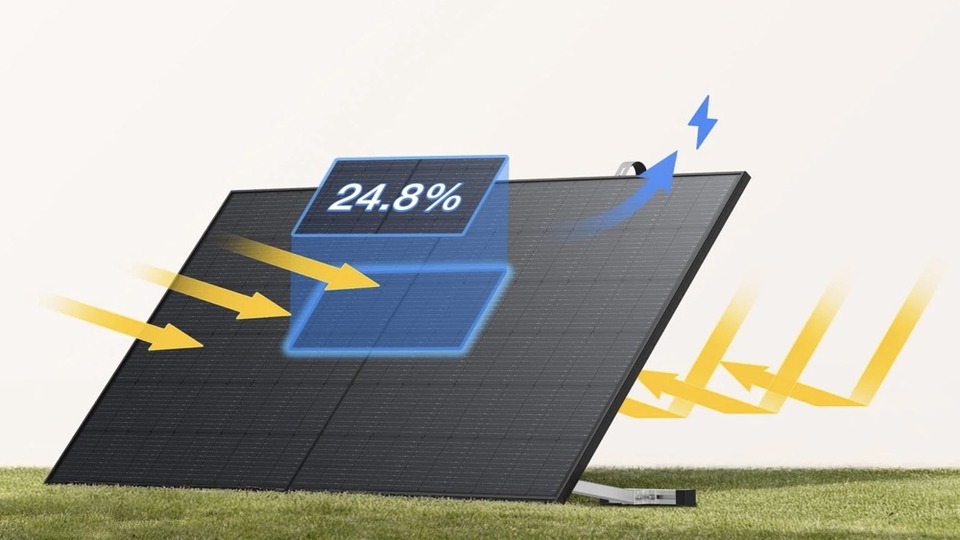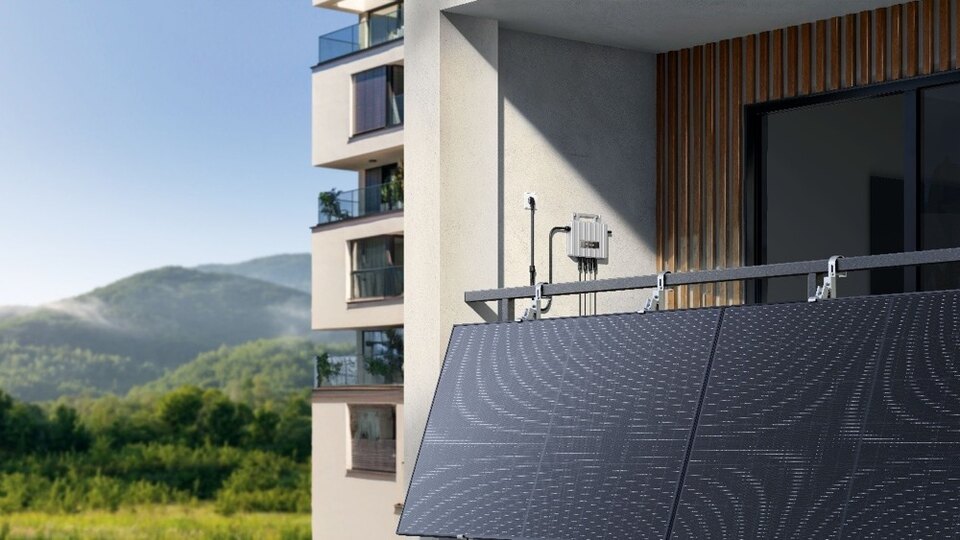How Many Solar Panels Do I Need for My Home in the UK?
Every day in the UK, more people are turning to solar power to make their homes greener and energy bills lower. With so many options available, it's common to wonder, how many solar panels do I need to power my home effectively? Understanding your household's energy needs and the right number of panels is key to getting the most from solar energy without overspending. Let's explore how to find that balance.
Average Solar Panel Numbers Needed Per Household in the UK?
Because energy needs differ from household to household, it's natural to ask: How many solar panels do I need for my home? Some general estimates can provide a helpful starting point, based on house size and average annual energy usage. It's important to remember that these are averages, and your personal consumption may differ:
A small home with one or two bedrooms, which typically uses around 1,800 kWh annually, may need 4 to 8 solar panels.
A medium-sized home with three bedrooms, the most common UK household size, with an average annual consumption of 2,700 kWh, usually requires 8 to 13 panels.
A large home with four or five bedrooms, with an average annual consumption of 4,100 kWh, could need 13 to 16 panels.
These figures are based on the modern, efficient solar panel, typically with a wattage of 350W or 450W.
How to Calculate the Number of Solar Panels for Your Home?
To size a solar system correctly, you need to understand three key factors: your electricity usage, the output of solar panels, and the production ratio that accounts for local conditions. Here's a step-by-step calculation process:
Identify Your Annual Electricity Usage
Start with your household's annual electricity consumption, measured in kilowatt-hours (kWh). This number is usually found on your energy bill.
If only monthly or seasonal data is available, you can estimate your yearly usage by combining a typical summer and winter month, then multiplying by six.
Example:
Summer usage: 220 kWh
Winter usage: 320 kWh
Annual usage = (220 + 320) × 6 = 3,240 kWh/year
Understand Solar Panel Output in the UK
The energy production of a solar panel depends not only on its rated wattage (e.g., 350W, 450W) but also on factors such as average sunlight hours, orientation, and shading. In the UK, the average peak sun hours (the number of equivalent full-sun hours per day) is about 2.5–3.5 hours/day, which directly impacts annual generation.
A 350W panel, when installed south-facing with minimal shading, typically generates 265–395 kWh per year. This figure is based on:
350W × 2.5–3.5 peak sun hours/day × 365 days × 75–85% system efficiency
A 450W panel under similar conditions can produce close to 500 kWh annually.
Higher wattage models, like the EcoFlow 520W Rigid Solar Panel (2 pieces) with an efficiency rating of over 24.8%, may produce 600–700 kWh annually under good conditions.
These numbers assume a south-facing installation with minimal shading.

Calculate Number of Panels
Once you know your usage and panel output, divide your annual consumption by the annual production of a panel.
Example for a home using 3,000 kWh/year:
With 350W panels (≈395 kWh/year each): 3,000 ÷ 395 ≈ 7.6 → 8 panels
With 450W panels (≈500 kWh/year each): 3,000 ÷ 500 ≈ 6 panels
It's recommended to round up to ensure coverage for seasonal fluctuations or future increases in energy use.
Factors Affecting the Number of Solar Panels You Need
The calculation above offers a useful guideline, but to accurately determine how many solar panels do I need in the UK, a professional installer will also take several key factors into account.
Panel Efficiency
Solar panel efficiency is a measure of how well a panel converts sunlight into usable electricity. Modern panels for residential use generally range from 350W to 450W. High-efficiency models allow you to achieve the same energy production with fewer panels. This becomes particularly important when roof space is limited or when combining solar panels and battery storage to optimise your system's output and usage.

Your Household's Energy Usage
Your actual electricity consumption is the most important factor in determining the size of your solar system. If you anticipate adding high-demand appliances like a heat pump or electric vehicle, you'll need to size up. For example, a heat pump can add over 3,000 kWh to your household's annual electricity use, which may require over 8 panels at 450W.
Roof Space, Angle, and Orientation
The size, pitch, and direction of your roof significantly affect panel performance. In the UK, the ideal setup is a south-facing roof with a 30° to 45° pitch, which maximises exposure to sunlight. East or west-facing roofs are still viable but may require a few extra panels to reach your target output.
Geographic Location
Your home's location influences how much solar energy you can generate. Southern parts of the UK, like Cornwall or Kent, typically receive more solar irradiance than northern areas such as Aberdeen or Inverness. As a result, homes in sunnier regions can often meet their energy needs with fewer panels, while those in cloudier areas may need a larger array to compensate.
The Type of Solar Panel
Not all panels are created equal. Options include monocrystalline, polycrystalline, and thin-film panels. Monocrystalline panels are the most efficient and space-saving, making them ideal for homes with limited roof area. While they come at a higher upfront cost, they deliver better performance over time and can save overall cost of installing solar panels.
Tips to Make the Most Out of Your Solar Panels
Getting the right number of panels is just the beginning. Once installed, these tips can help you maximize your system's performance and your savings.
Install a Battery Storage System
Excess energy generated during the day can be stored in a battery and used at night or on cloudy days. This reduces your reliance on the grid and helps you maximise the use of your self-generated energy. Or, you may consider smart storage solutions like the EcoFlow STREAM Ultra, which integrates with over 99% of solar panels and can help slash up to £963 off your annual electricity bills.
EcoFlow STREAM Ultra
Shift Energy Use to Daylight Hours
You can use energy-intensive appliances, such as washing machines, dishwashers, and tumble dryers, during the day when your panels are most productive. Many modern appliances have built-in timers, or you can install a Home Energy Management System (HEMS) to automate this process.
Keep Panels Clean and Clear
While rain handles much of the day-to-day cleaning in the UK, debris like dust, bird droppings, or fallen leaves can still reduce efficiency over time. Schedule a professional clean every 1–2 years, especially if your panels are near trees or exposed to heavy pollen.
Monitor Your System's Performance
Your solar system's companion app or display monitor can track real-time energy generation and usage. This data helps you identify peak production periods and adjust your habits accordingly, for instance, scheduling electric vehicle charging during peak sunlight hours.
Optimize with Energy-Efficient Appliances
Pairing your solar system with energy-efficient appliances means you use less electricity overall. So, you can look for A-rated or Energy Star-certified devices to ensure your home setup is working in harmony with your solar array.
Conclusion
Figuring out how many solar panels do I need puts you in a strong position to make a smart choice for your home. With the right advice, switching to solar power becomes straightforward and rewarding. If you're ready, talk to a professional installer who can help design a system that fits your needs and starts saving you money.
FAQS
How many solar panels are needed to power a typical house?
The number of solar panels needed depends on your household's energy usage and the efficiency of the panels. In the UK, the average home uses about 2,700 to 4,500 kWh of electricity per year. A standard solar panel produces around 300–400 watts in peak sunlight. For a typical three-bedroom house, this usually works out to 10–13 panels, depending on roof space and orientation.
How do I calculate how many solar panels I need?
To calculate the number of panels, start by checking your annual electricity consumption on your energy bills (measured in kWh). Next, find out the average output of the solar panels you're considering (for example, 350W per panel). Divide your total yearly usage by the expected yearly production of one panel. For instance, if one 350W panel in the UK produces about 320–360 kWh annually, and your home uses 3,600 kWh per year, you'd need roughly 10–12 panels.
What is the 120 rule for solar panels?
The 120% rule refers to the maximum allowable size of a solar PV system relative to the rating of your home's electrical panel. In the UK (and other regions following similar safety codes), this rule means that the solar breaker can be up to 120% of the busbar rating of the electrical distribution panel. For example, if your consumer unit has a 100-amp busbar, the combined load of your main breaker and solar backfeed breaker cannot exceed 120 amps. This ensures safe operation and prevents overloading the home's wiring.
Will a 100W solar panel run a fridge?
A single 100W solar panel is generally not sufficient to run a fridge continuously. Most modern household fridges in the UK require between 100–250 watts per hour, and they cycle on and off throughout the day. Over 24 hours, that means a fridge may consume 1–2 kWh daily, while a 100W panel in the UK climate typically generates only about 300–400 Wh per day (0.3–0.4 kWh), depending on season and sunlight. Therefore, you'd need multiple panels plus a battery system to reliably run a fridge.